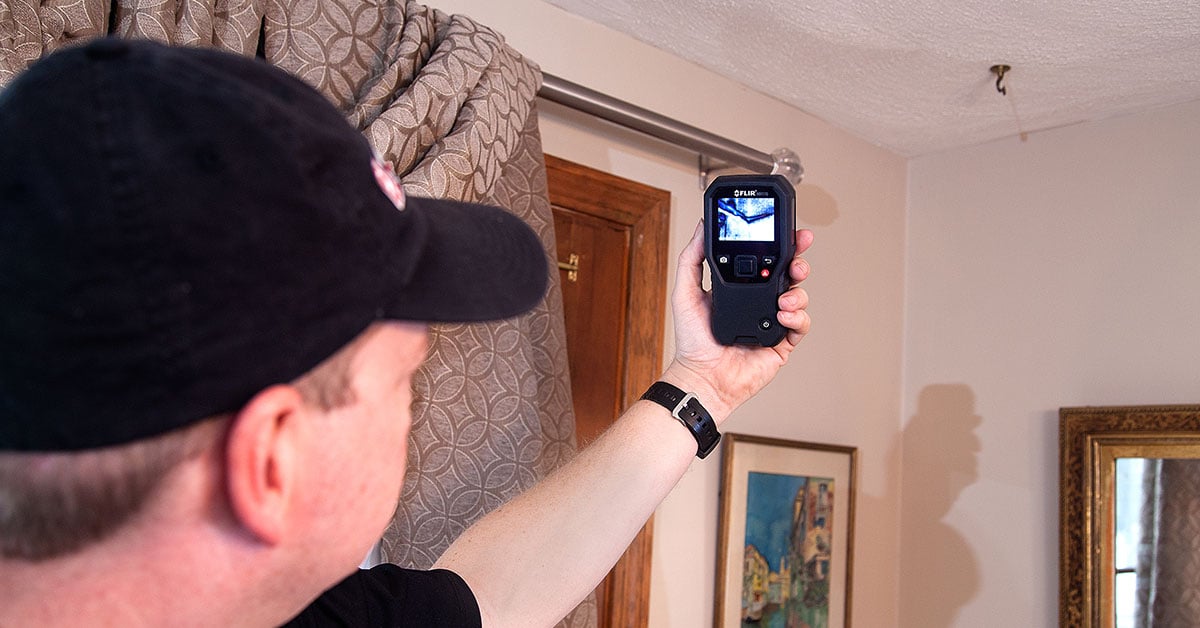We've unearthed this article pertaining to Locating water leaks down the page on the internet and reckoned it made good sense to relate it with you here.

Early detection of leaking water lines can minimize a potential disaster. Besides conserving you cash, it will reduce the aggravation as well as frustration. The moment you discover a leakage, calling your plumber for fixings is the best remedy. However, some small water leakages might not be visible. If you can not identify it with your naked eyes, here are some hacks that assist.
1. Examine the Water Meter
Every house has a water meter. Inspecting it is a guaranteed manner in which aids you discover leaks. For starters, shut off all the water resources. Make certain no person will flush, use the faucet, shower, run the washing device or dish washer. From there, most likely to the meter and also watch if it will certainly change. Since no one is using it, there ought to be no movements. That shows a fast-moving leakage if it relocates. Furthermore, if you detect no changes, wait an hour or 2 and also check back again. This indicates you might have a sluggish leak that can also be below ground.
2. Check Water Usage
If you identify unexpected adjustments, regardless of your intake being the very same, it means that you have leaks in your plumbing system. An abrupt spike in your bill indicates a fast-moving leak.
A consistent increase every month, also with the same behaviors, shows you have a slow leakage that's also gradually escalating. Call a plumber to completely inspect your building, specifically if you feel a cozy location on your floor with piping below.
3. Do a Food Coloring Test
When it pertains to water consumption, 30% originates from toilets. Test to see if they are running appropriately. Drop specks of food color in the container and wait 10 minutes. If the shade in some way infiltrates your bowl throughout that time without flushing, there's a leakage between the storage tank and bowl.
4. Asses Exterior Lines
Do not forget to inspect your outdoor water lines as well. Test faucets by connecting a yard hose. Should water leak out of the connection, you have a loose rubber gasket. Replace this and also ensure all connections are tight. It will help get it professionally analyzed and also preserved yearly if you've obtained a sprinkler system. One little leakage can throw away tons of water and also spike your water expense.
5. Evaluate the situation as well as examine
Homeowners ought to make it a practice to inspect under the sink counters and even inside cabinets for any kind of bad odor or mold and mildew growth. These two red flags indicate a leak so punctual focus is needed. Doing routine evaluations, even bi-annually, can conserve you from a significant issue.
More notably, if you recognize your home is currently old, keep a watchful eye on your heating units, hose pipes, pipelines and so on. Look for discolorations as well as weakening as the majority of devices as well as pipes have a life span. They will certainly likewise naturally weaken because of tear and also use. If you suspect dripping water lines in your plumbing system, do not await it to rise. Call an expert plumber immediately so you don't wind up with a terrible mess in your house.
Early discovery of leaking water lines can reduce a potential catastrophe. Some small water leakages may not be visible. Checking it is a surefire means that helps you find leakages. One little leak can waste loads of water and increase your water expense.
If you believe leaking water lines in your plumbing system, don't wait for it to escalate.
WARNING SIGNS OF WATER LEAKAGE BEHIND THE WALL
PERSISTENT MUSTY ODORS
As water slowly drips from a leaky pipe inside the wall, flooring and sheetrock stay damp and develop an odor similar to wet cardboard. It generates a musty smell that can help you find hidden leaks.
MOLD IN UNUSUAL AREAS
Mold usually grows in wet areas like kitchens, baths and laundry rooms. If you spot the stuff on walls or baseboards in other rooms of the house, it’s a good indicator of undetected water leaks.
STAINS THAT GROW
When mold thrives around a leaky pipe, it sometimes takes hold on the inside surface of the affected wall. A growing stain on otherwise clean sheetrock is often your sign of a hidden plumbing problem.
PEELING OR BUBBLING WALLPAPER / PAINT
This clue is easy to miss in rooms that don’t get much use. When you see wallpaper separating along seams or paint bubbling or flaking off the wall, blame sheetrock that stays wet because of an undetected leak.
BUCKLED CEILINGS AND STAINED FLOORS
If ceilings or floors in bathrooms, kitchens or laundry areas develop structural problems, don’t rule out constant damp inside the walls. Wet sheetrock can affect adjacent framing, flooring and ceilings.
https://www.servicemasterbyzaba.com/blog/how-to-detect-water-leakage-in-walls/

I ran across that entry about Locating water leaks while scouting around the search engines. Liked our write up? Please share it. Help someone else check it out. Many thanks for your time invested reading it.
Plumbing SOS? Dial!